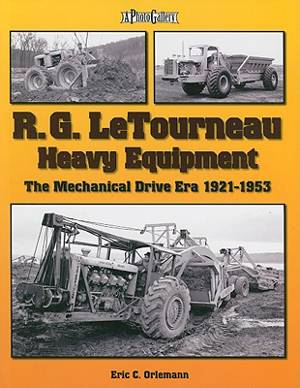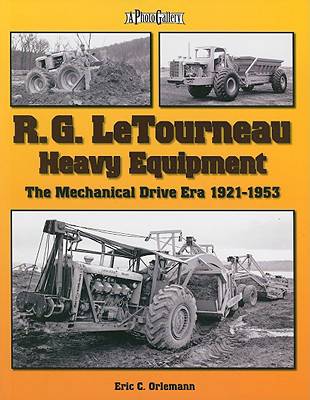
Je cadeautjes zeker op tijd in huis hebben voor de feestdagen? Kom langs in onze winkels en vind het perfecte geschenk!
- Afhalen na 1 uur in een winkel met voorraad
- Gratis thuislevering in België vanaf € 30
- Ruim aanbod met 7 miljoen producten
Je cadeautjes zeker op tijd in huis hebben voor de feestdagen? Kom langs in onze winkels en vind het perfecte geschenk!
- Afhalen na 1 uur in een winkel met voorraad
- Gratis thuislevering in België vanaf € 30
- Ruim aanbod met 7 miljoen producten
Zoeken
€ 60,95
+ 121 punten
Omschrijving
In the history of heavy equipment development, no single man's name is more respected or revered as that of R. G. LeTourneau. Robert Gilmour LeTourneau is considered by many to be the dean of high-speed mobile earthmoving equipment. His designs of the 1920s, 30s, and 40s laid the fundamental groundwork for many of the earthmoving machines we see on a daily basis. Self-propelled, rubber tired scrapers, bulldozing blades, and rippers were all conceived under his engineering genius in the quest for moving material at the lowest-cost-per-yard. The time period of 1921 to 1953 saw many of R. G. LeTourneau's most important heavy-equipment introductions, such as the Carryall and the Tournapull, and the initial development of the electric drive wheel. This first volume of fantastic machine creations covers the early years up until the sale of the company to Westinghouse in 1953. Standard production, specials, and experimental machines in rare archival images, some in print for the very first time, help showcase what made R. G. LeTourneau so important in the heavy equipment industry.
Specificaties
Betrokkenen
- Auteur(s):
- Uitgeverij:
Inhoud
- Aantal bladzijden:
- 128
- Taal:
- Engels
- Reeks:
Eigenschappen
- Productcode (EAN):
- 9781583882146
- Verschijningsdatum:
- 1/05/2008
- Uitvoering:
- Paperback
- Formaat:
- Trade paperback (VS)
- Afmetingen:
- 216 mm x 279 mm
- Gewicht:
- 657 g

Alleen bij Standaard Boekhandel
+ 121 punten op je klantenkaart van Standaard Boekhandel
Beoordelingen
We publiceren alleen reviews die voldoen aan de voorwaarden voor reviews. Bekijk onze voorwaarden voor reviews.









